Unsurprisingly, snowdrops (Galanthus, below) displayed their first glimpse of color in late December, though peak bloom is proceeding slowly in the new year. Flowers of early types are often revealed prior to the new year, and if not covered by a blanket of snow, early and later blooming snowdrops will help satisfy the gardener through the winter months.

The first color on Vernal witch hazels (Hamamelis vernalis, below) peeks through, with the mildly fragrant, spidery blooms dependably progressing to a peak in mid January. The long flowering Vernal witch hazels are followed by brighter and more fragrant flowered hybrids that remain colorful into the start of spring.
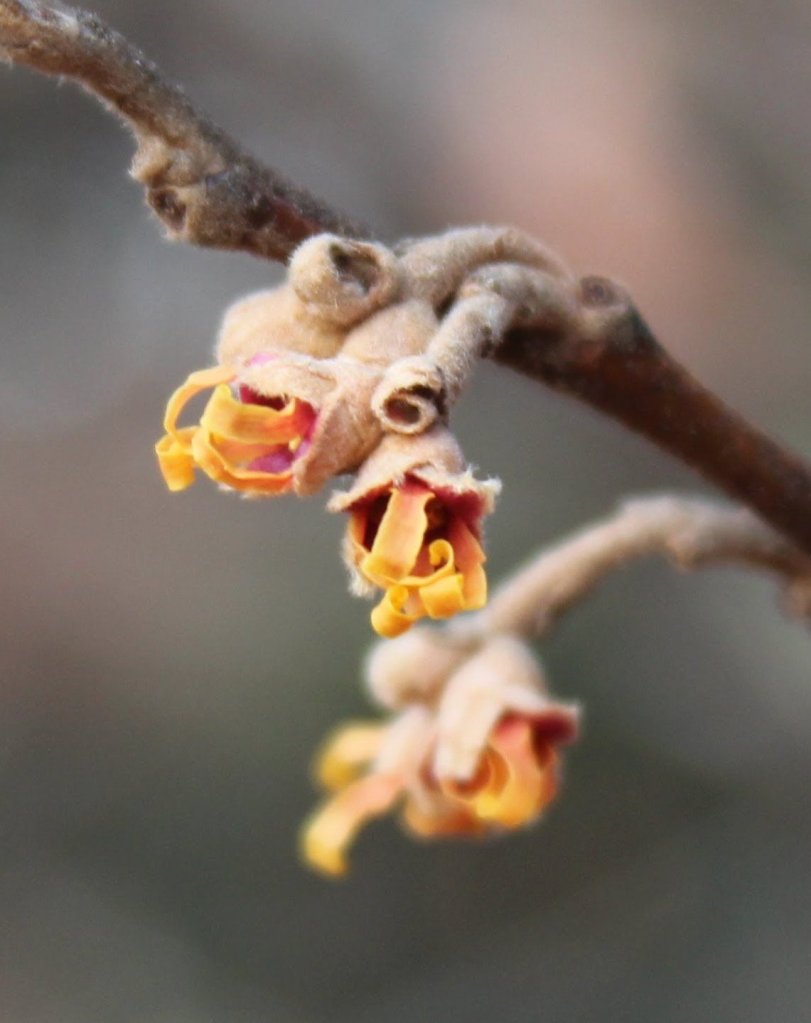
In the unusual, very mild winter, paperbushes (Edgeworthia chrysantha below) might begin to show color early in January. While this early winter has been without extreme cold, flower buds have swelled, but not such that early flowering is expected.
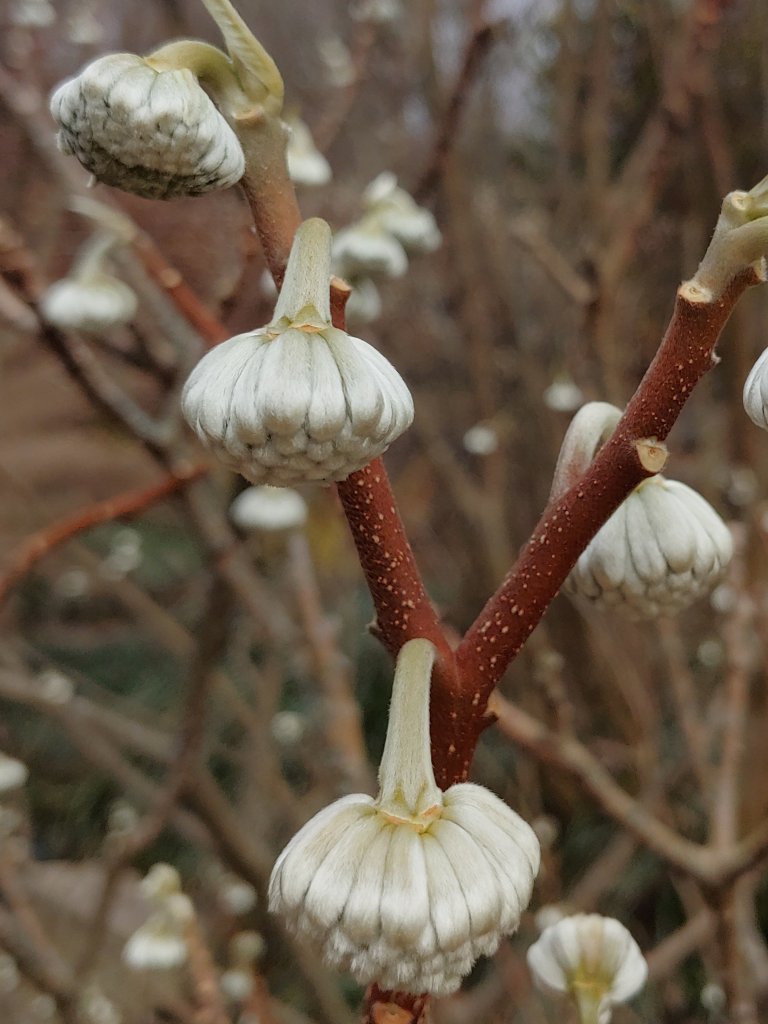
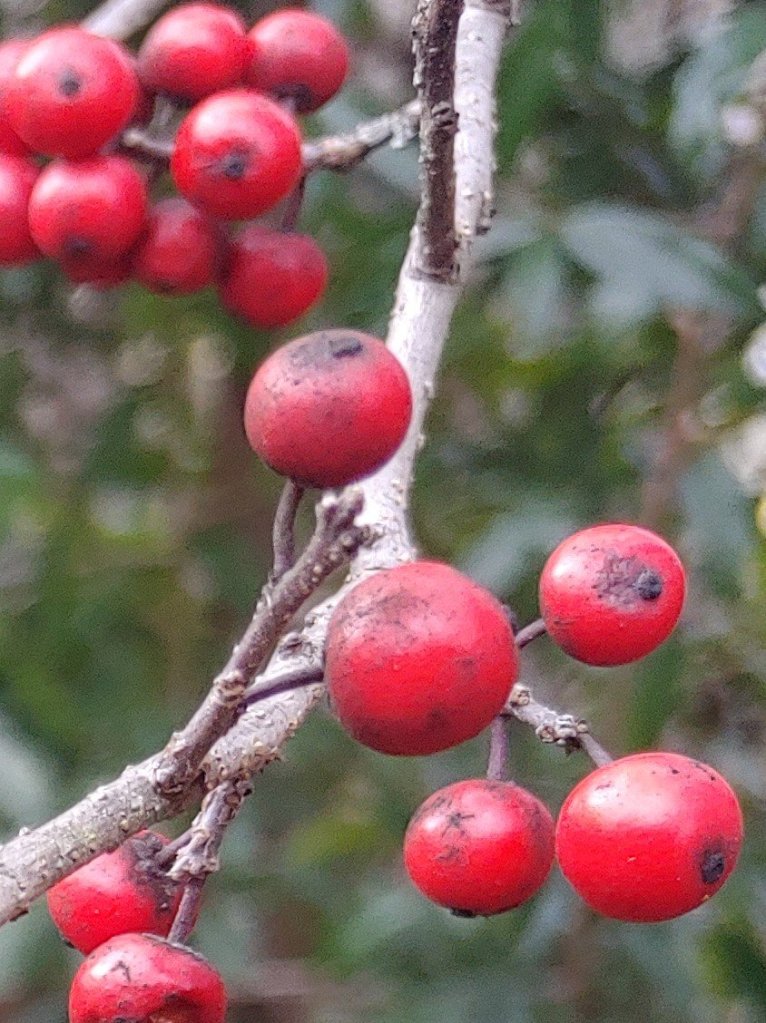
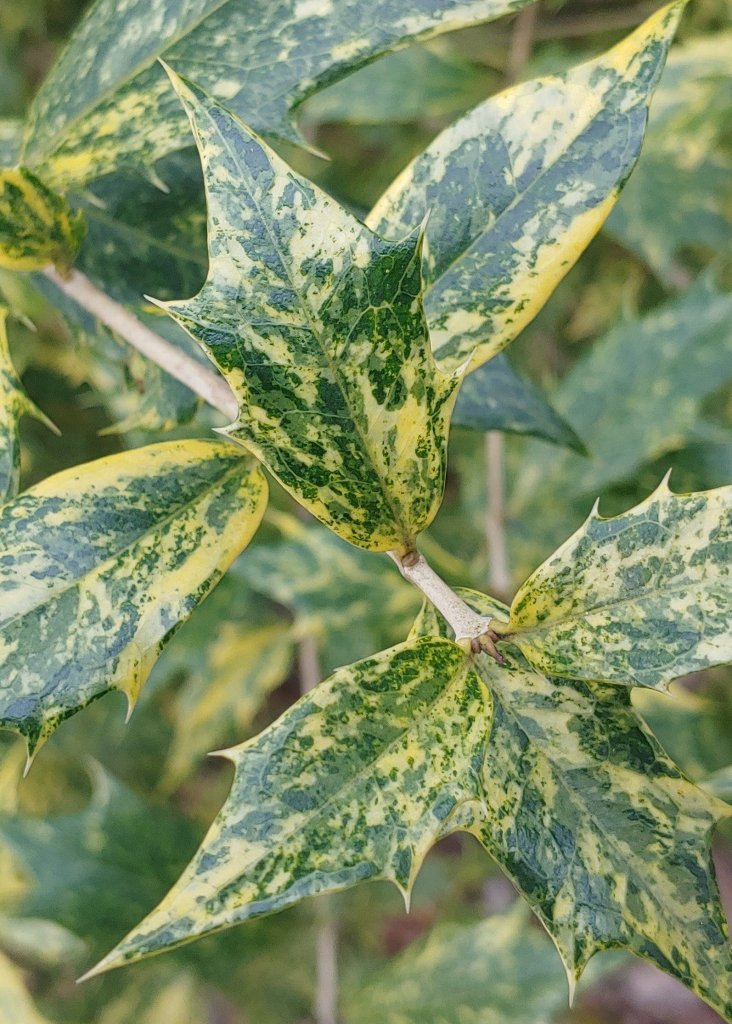
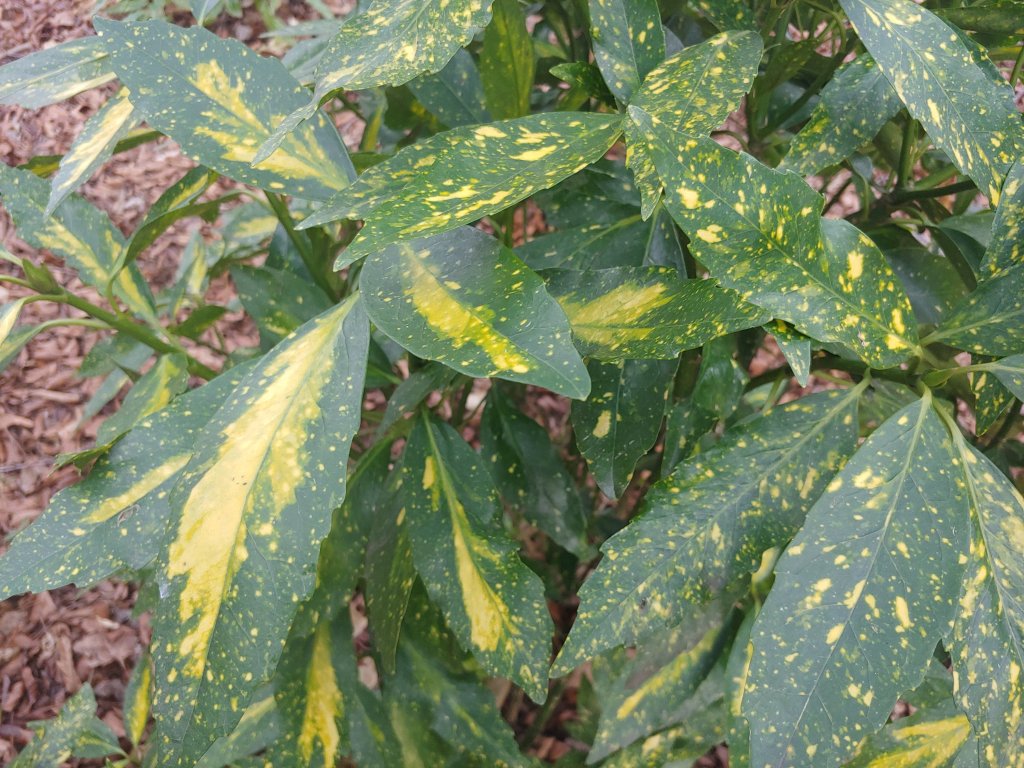
Aucuba seems like is should be sensitive to frost. It is very sensitive to sun exposure.
Aucuba is hardy to zone 7, but I’ve been pleasantly surprised when it has survived temperatures to seven below with no evident problems. I’ve planted handfuls, with many species with no issues in shaded areas.